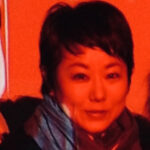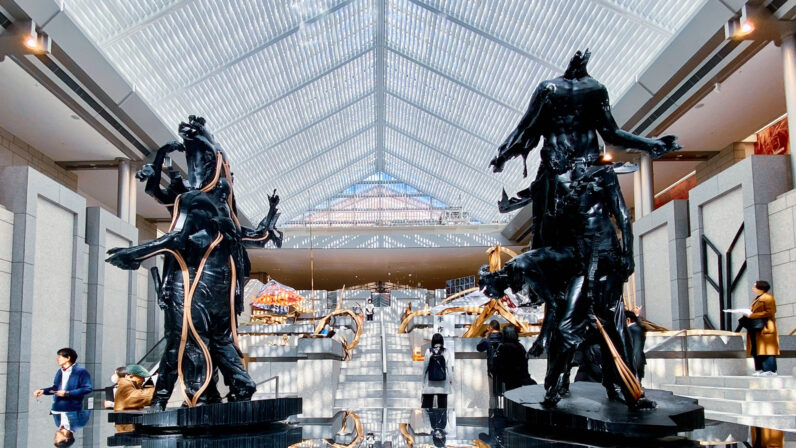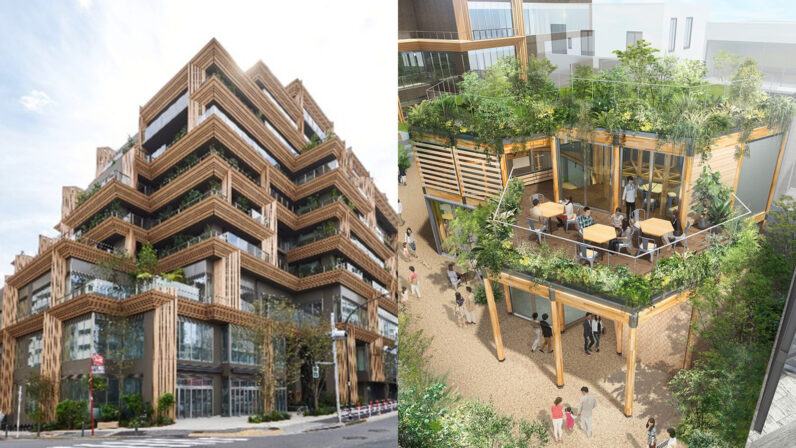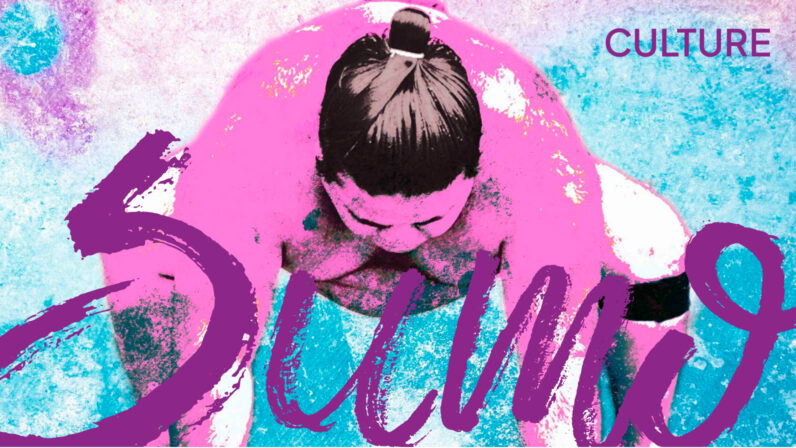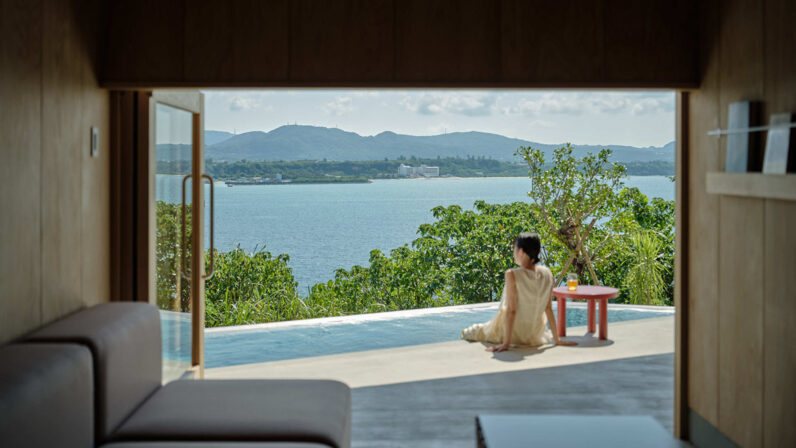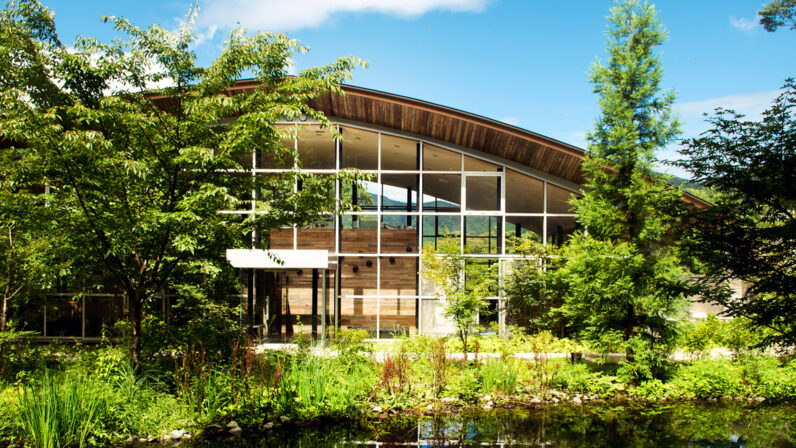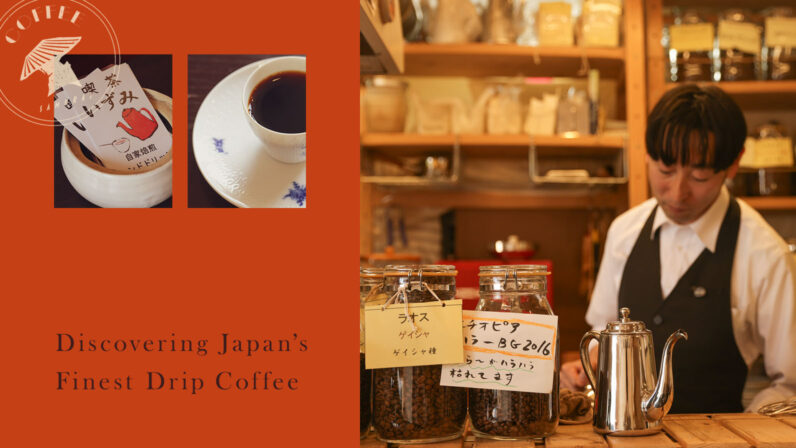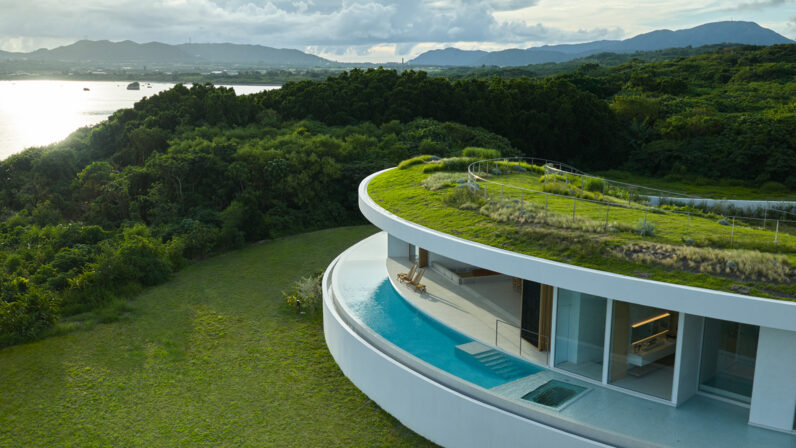In the midst of April when cherry blossoms are in full bloom, why not enjoy hanami in Ueno Park, just about a 30-minute ride from Shibuya. After indulging in the scenery, head straight to the neighboring Tokyo University of the Arts Art Museum for the ongoing ‘Yoshiwara Exhibition’. The first-ever exhibition themed around ‘Yoshiwara,’ the Edo Shogunate-approved red-light district that, despite never returning, nurtured a plethora of cultures.

Ueno Park bursting with cherry blossoms in full bloom.
To start, known as the pleasure quarter, Yoshiwara was a unique district officially sanctioned by the Tokugawa Shogunate. It began in 1617 and lasted until 1958, albeit relocating over time. It was an enclosed district surrounded by tall black walls, where brothels (red-light houses) could be found. Women who worked there were brought from all over the country to live and work in order to repay family debts. They could not leave beyond the walls until they repaid their debts or had them assumed by male customers. It was a system that would not be condoned in modern day and this grim history of women’s rights violations should never be forgotten or repeated.
At the same time, Yoshiwara served as a cultural hub where various art forms, crafts, music, and literature converged. Calligraphy, waka and haikai poetry, kimono, dance, music, ikebana, and tea ceremony flourished there. Attention was drawn to the luxurious and flamboyant kimonos worn by the courtesans, which were depicted by artists, leading to the development of publishing culture such as ukiyo-e and sharebon.
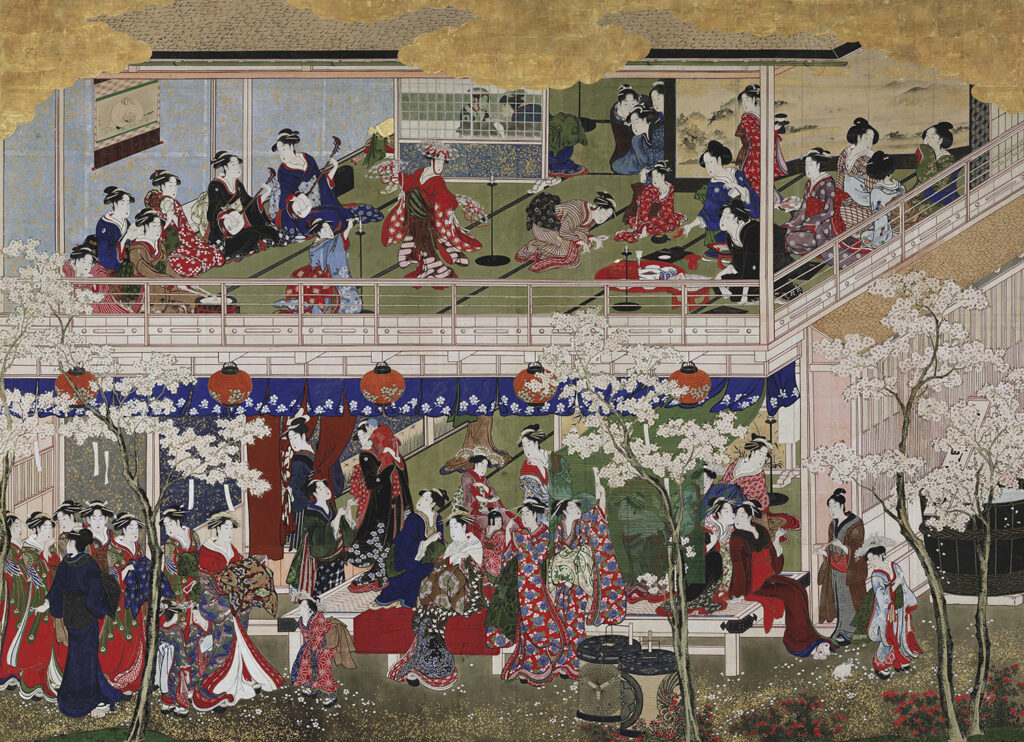
Kitagawa Utamaro’s ‘Cherry Blossoms at Yoshiwara,’ 1793. Wadsworth Atheneum Museum of Art
In Yoshiwara, it’s said that cherry trees were only brought in during March for people to enjoy hanami.
Various seasonal events were also held year-round in Yoshiwara. In March, for instance, cherry blossoms were brought in for a limited month-long period, and nightly cherry blossom viewing events were held. The Nikawa Festival held in August also involved performances by Geisha, adding to the area’s extravagant allure.
This exhibition marks the first-ever event to focus solely on Yoshiwara, carefully gathering artworks from both domestic and international sources while acknowledging the district’s dark history. The intention of the exhibition isn’t to condone the system established at Yoshiwara but to shed light on the culture nurtured within, despite its negative past.
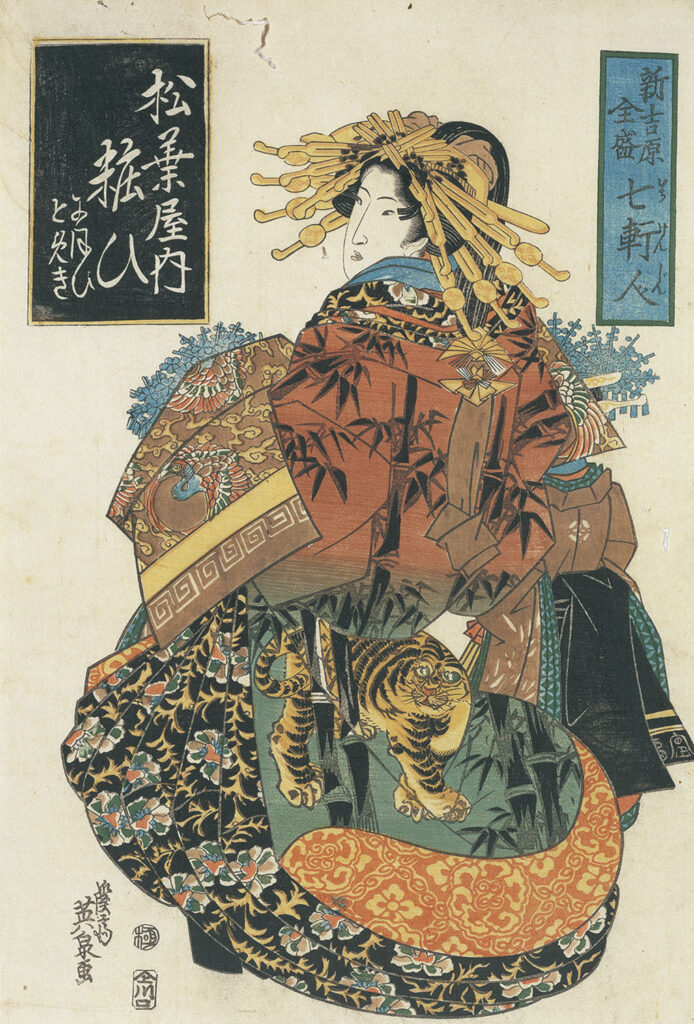
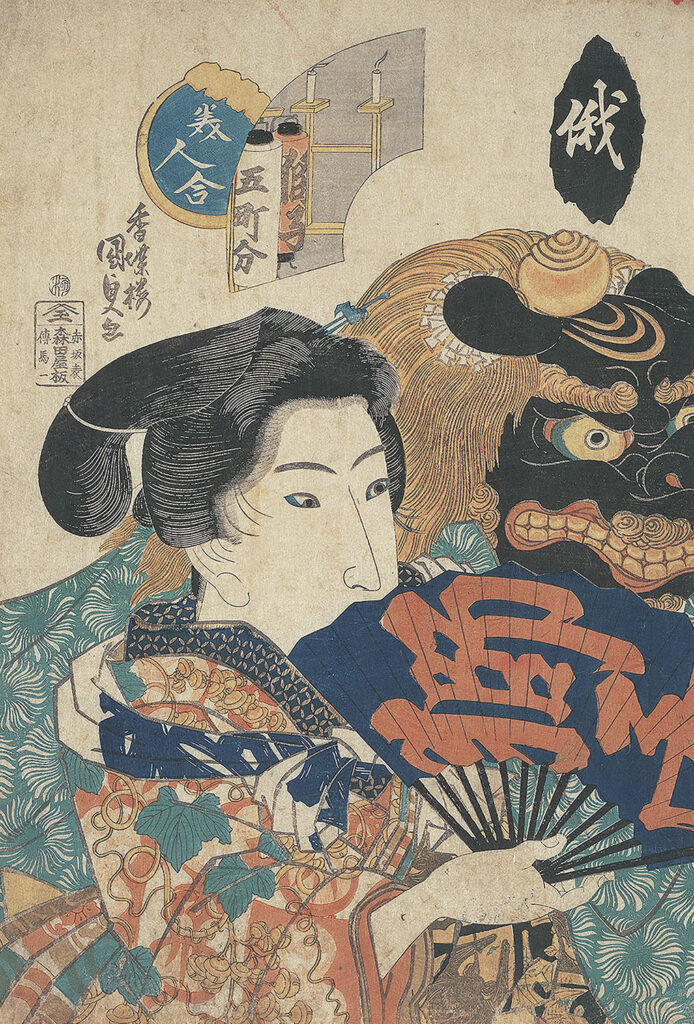
First Piece: Utagawa Kunisada’s ‘Niwaka’ from the series ‘Comparison of Beauties’, circa early 19th century, on display at the Hagi Uragami Museum.
Exhibition Dates: March 26th to April 21st.
According to Yuko Tanaka, a former president of Hosei University and a researcher of Edo culture who served as the academic advisor for this exhibition, artists held a great amount of respect for the courtesans. In ukiyo-e prints depicting courtesans, attention was paid to intricate details such as costumes and hair ornaments, rather than focusing solely on the women’s physical bodies.
In fact, ukiyo-e prints depicting courtesans widely exhibit fashionable cues that resonate with contemporary tastes, including patterns and color combinations of kimonos.


The exhibition venue where the essence of Yoshiwara has been recreated
The third venue out of the four exhibition spaces allows visitors to view artworks in a room where the streetscape of Yoshiwara has been recreated. Visitors enter the venue as if they were customers traveling to Yoshiwara by boat up the Sumida River, passing by three-dimensional artworks shaped like the Sumida River. Staff members overseeing the exhibition room also wear happi coats to enhance the atmosphere.
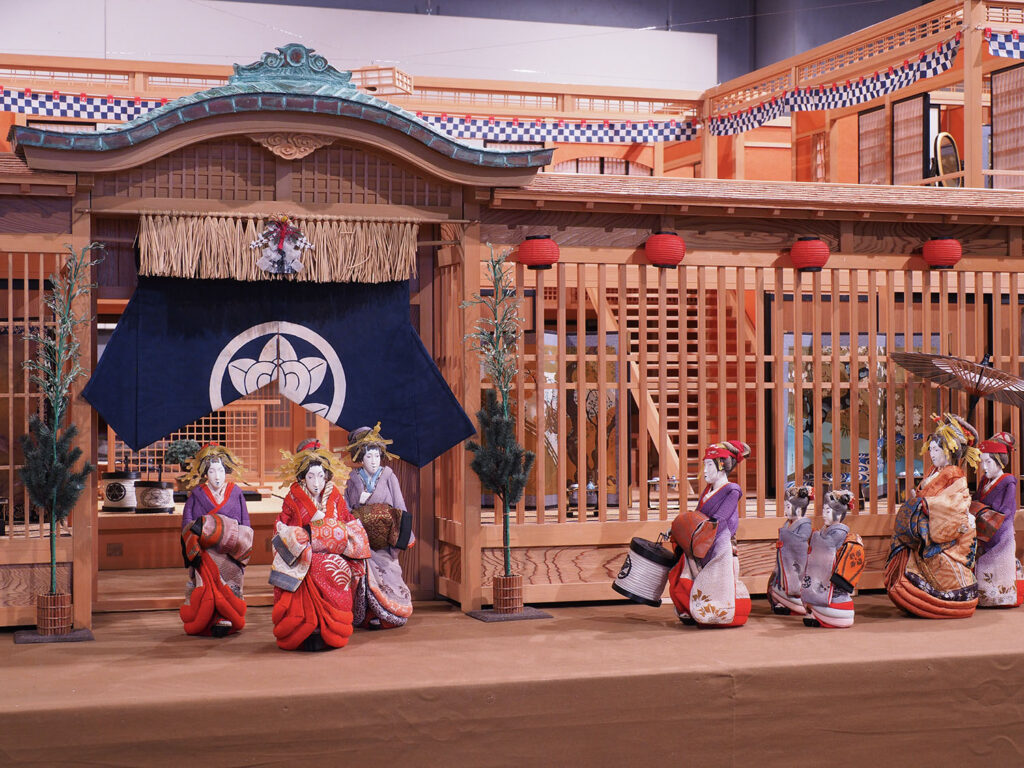
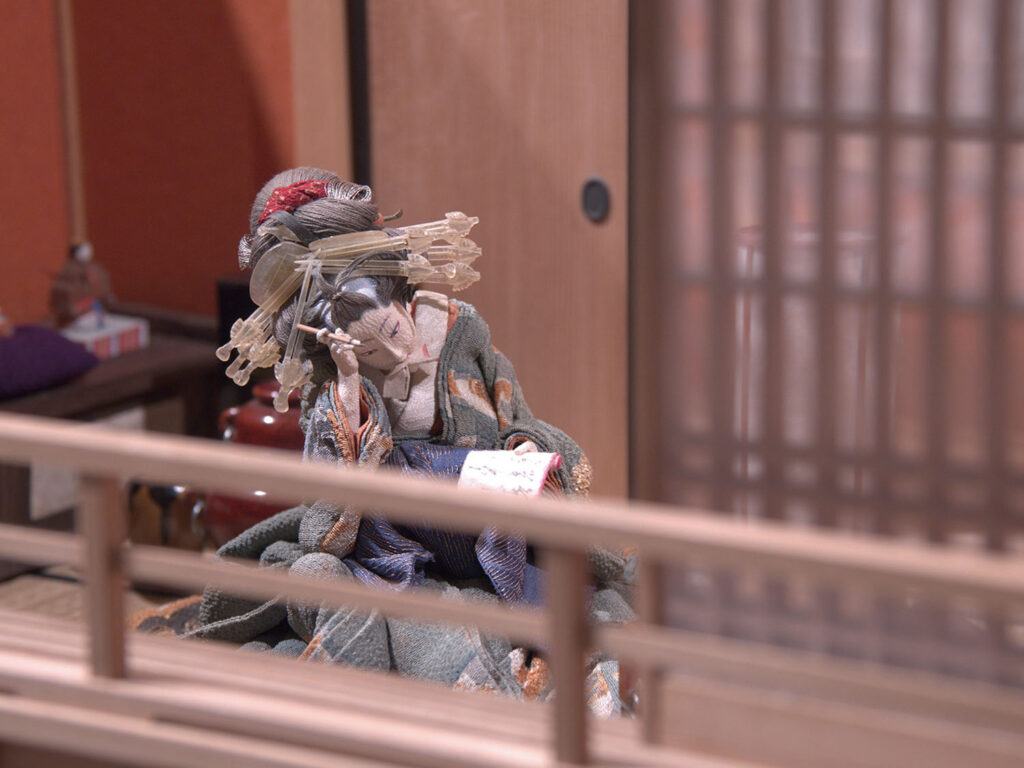
Tsujimura Jusaburo, Miura Hiroshi, Hattori Ichiro
Diorama of an imaginary brothel in Yoshiwara
At the end of the exhibition, a three-dimensional model of a Yoshiwara brothel measuring 268×235.5×81.5cm is showcased. This offers a vivid depiction of the world of Yoshiwara and the environment it was set in. The model also includes 23 dolls which were crafted by renowned puppeteer and doll artist Jusaburo Tsujimura, adorned with beautifully embroidered garments featuring gold and silver threads.
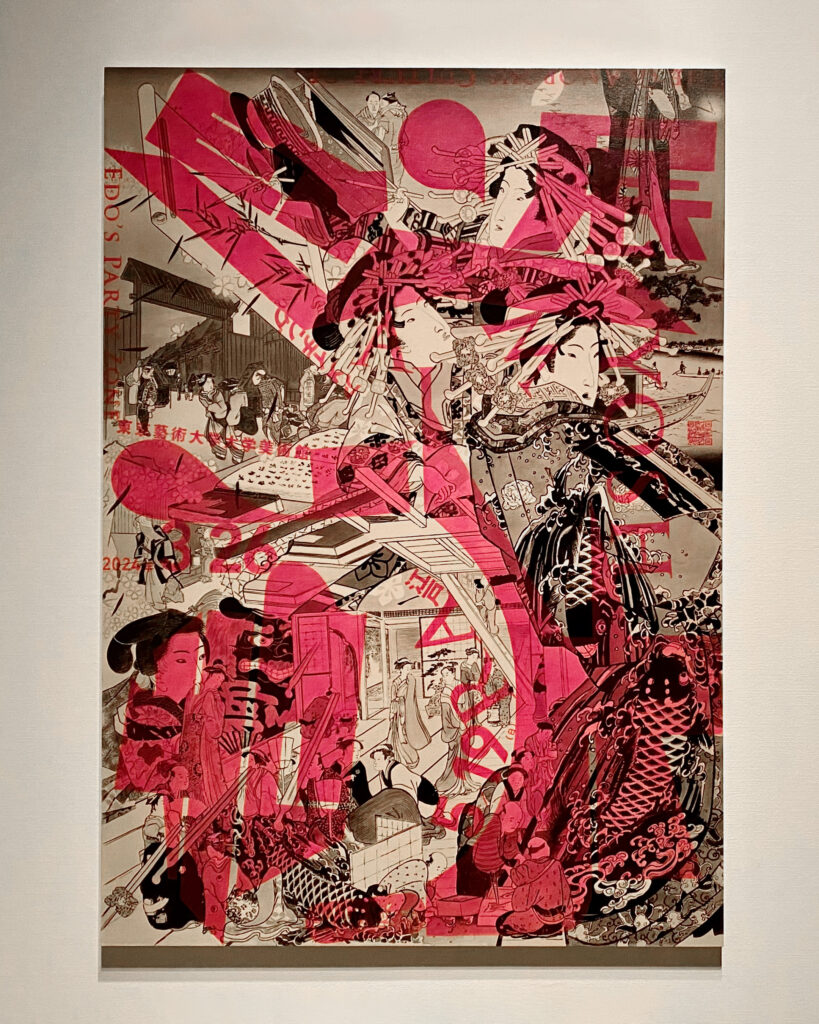
Fukuda Miran, Yoshiwara exhibition, 2024, Collection of the Artist
The key visual of this exhibition was created by contemporary artist Miran Fukuda who also studied painting at the Tokyo University of Arts. It is a painted artwork consisting of a collage of ukiyo-e with added colors. Yoshiwara with its vibrant and rich ambiance, was a place where Edo culture converged, and continues to be a source of inspiration for modern artists.
If you happen to visit during the cherry blossom season, you may even feel as if you are wandering through a fictional world of the Edo period even after leaving the museum.
Special Exhibition:Yoshiwara Venue: Tokyo University of the Arts Art Museum Duration: March 26, 2024, to May 19, 2024 Exhibit rotation during the duration: First period: March 26 to April 21 Second period: April 23 to May 19 Closed on Mondays (Except for April 29 and May 6, open), May 7 Opening hours: 10:00 to 17:00 Admission fee: General 2000 yen, and more. Website: https://daiyoshiwara2024.jp/english.html

